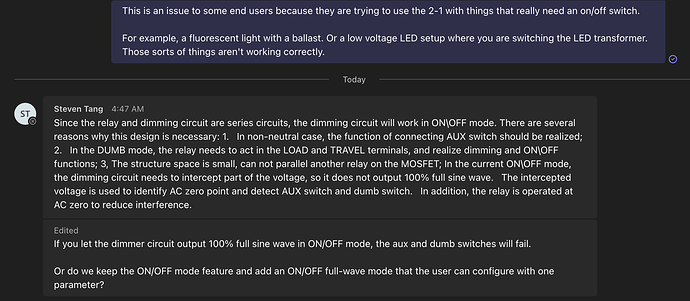Following up here as we received a response from the manufacturer and I’d love to get your opinion on it since you’ve graciously taken time out to analyze the switches with an oscilloscope and explained to me why this is important.
I’m not sure if this passes the sniff test with you, but thought I’d just throw it out there and see what you think.
–
Regarding leading vs trailing edge – do you guys think this can be solved via firmware or will it have to be a hardware implementation?
Edit: Actually we got a response around why leading edge was chosen:
“In neutral mode, auxiliary switches and dumb switches are detected. In non-neutral mode, the auxiliary switch is detected. In addition, the detection of alternating current crossing zero. On these detections, leading edge dimming is better than trailing edge dimming.”


